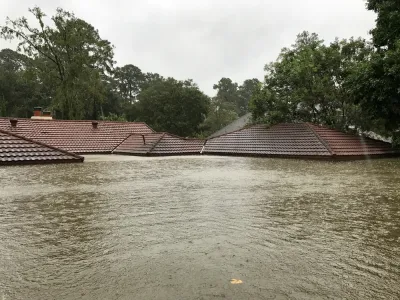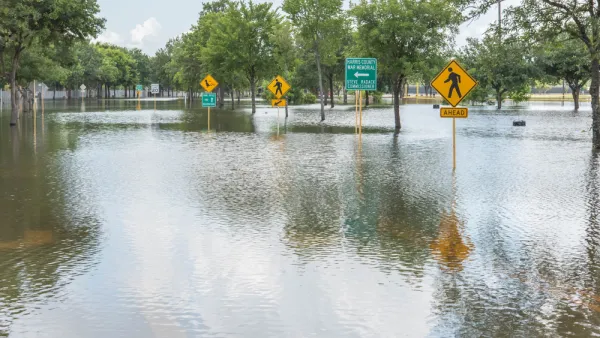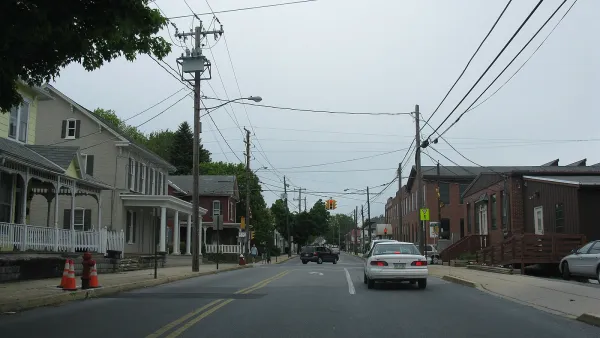Advocates and researchers say new development regulations, with more stringent flood protections, aren't doing enough to control the stormwater impacts of sprawl.

"As new development regulations in Houston attempt to offset the effects of more frequent heavy storms, some advocates and researchers say targeting the area’s urban sprawl will do more to reduce those at risk than limiting the amount of development in the city’s core," reports Emma Whalen.
The new regulations include "adjustments to flood plain boundaries, higher elevation requirements within flood plains and more significant detention requirements outside of flood plains," according to Whalen. The city has approved "25 drainage permits, many of which are subject to stricter city requirements," in and around the flood plains of Buffalo and White Oak Bayous since Hurricane Harvey, according to Whalen.
Meanwhile, development sprawl continues to sprawl beyond Houston's boundaries, raising concerns among advocates at the Bayou Preservation Association and academics at Rice University. Whalen summarizes the case for urban infill as an effective flood prevention tool:
Researchers, including Shelton, said approaching development regulations from a watershed level rather than a jurisdictional level would make it easier to manage stormwater runoff across Houston and its suburbs and would reduce the strain downstream on bayous and tributaries. This approach also calls for more dense development on existing property rather than converting open land into new subdivisions.
FULL STORY: In Houston, development must think outside the flood plains, advocates say

National Parks Layoffs Will Cause Communities to Lose Billions
Thousands of essential park workers were laid off this week, just before the busy spring break season.

Retro-silient?: America’s First “Eco-burb,” The Woodlands Turns 50
A master-planned community north of Houston offers lessons on green infrastructure and resilient design, but falls short of its founder’s lofty affordability and walkability goals.

Delivering for America Plan Will Downgrade Mail Service in at Least 49.5 Percent of Zip Codes
Republican and Democrat lawmakers criticize the plan for its disproportionate negative impact on rural communities.

Test News Post 1
This is a summary

Test News Headline 46
Test for the image on the front page.

Balancing Bombs and Butterflies: How the National Guard Protects a Rare Species
The National Guard at Fort Indiantown Gap uses GIS technology and land management strategies to balance military training with conservation efforts, ensuring the survival of the rare eastern regal fritillary butterfly.
Urban Design for Planners 1: Software Tools
This six-course series explores essential urban design concepts using open source software and equips planners with the tools they need to participate fully in the urban design process.
Planning for Universal Design
Learn the tools for implementing Universal Design in planning regulations.
EMC Planning Group, Inc.
Planetizen
Planetizen
Mpact (formerly Rail~Volution)
Great Falls Development Authority, Inc.
HUDs Office of Policy Development and Research
NYU Wagner Graduate School of Public Service





























